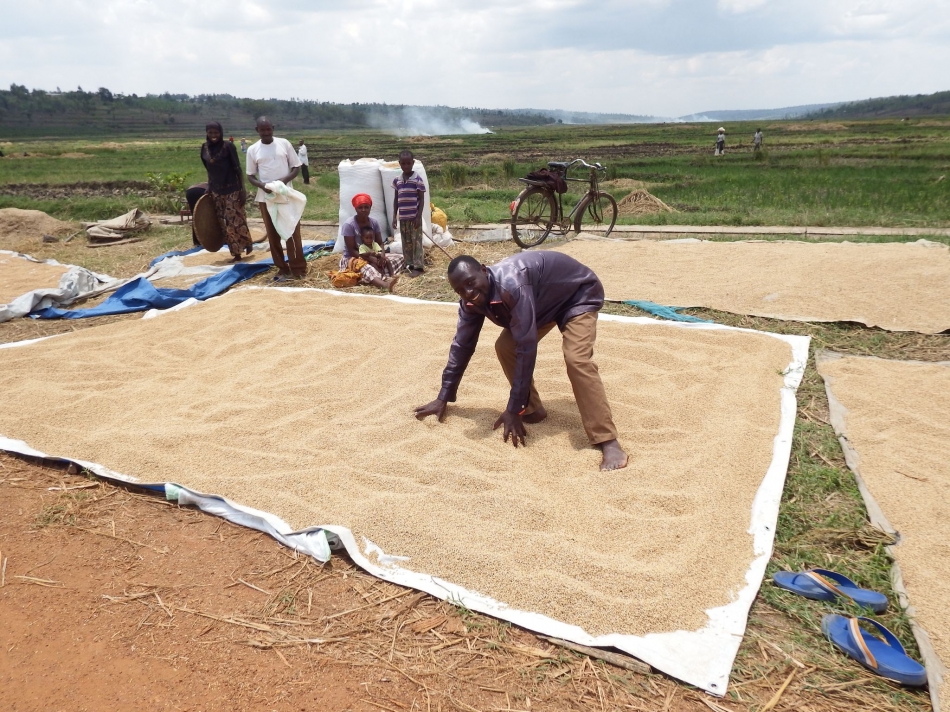Knowledge Products > Details
Sharing Water in Rwanda’s Breadbasket: Improving Farming Practices and Increasing Seasonal Harvests

Agrinatura & FAO/Nick Pasiecznik
©Agrinatura & FAO/Nick Pasiecznik
The Capacity Development for Agricultural Innovation Systems (CDAIS) project was launched to help individuals, organizations and national bodies involved in innovating agricultural sectors to navigate problems and improve collaboration through dialogue. Supported by the European Union (EU) and implemented by FAO in partnership with Agrinatura (a consortium of 31 European universities and research institutes), this project uses a community-based approach that works through reflection, group learning and increased engagement, helping farmers to better adopt innovative methods.
The Nyagatare district (Eastern Province) is Rwanda’s breadbasket - a vast area of agricultural land providing food for the entire country. The people of this district are mainly farmers, rearing livestock and cultivating crops such as maize and rice, but they suffer a long dry season stretching from June to mid-September and, consequently, water has always been a vital, much sought-after resource - with competition for it high. In 2015, the Rwandan government, together with financial support from the World Bank, constructed a USD 10 million dam and water reservoir. Before long, however, farmers cultivating the upper hillside would cut off at least an eighth of the rainwater that flowed into the catchment below, leaving farmers and cattle keepers downhill struggling. Conflicts arose and a solution to the problem was needed.
Farmers in Nyagatare participated in the CDAIS project in order to work out a way to solve their water-sharing problems. Through CDAIS everyone got to know each other, learnt to listen, leading to better communication, understanding and a new mutual trust. In the past, cattle keepers clashed with others in the water users’ association as they felt that they had a right to free access to water. CDAIS changed perceptions and today farmers are more pragmatic and organized, and they undertake most repairs of the dam and distribution channels. To learn more, click here
Documents
- Sharing Water in Rwanda’s breadbasket: Improving Farming Practices and Increasing Seasonal Harvests
- FAO and the CDAIS project (Available in English, French and Spanish)
- CDAIS Project in Rwanda (Available in English only)
Related resources
- Report: Lessons from Implementing a Common Framework in Eight Countries
- More Effective and Sustainable Investments in Water for Poverty Reduction: Needs Assessment in Rwanda
- Water Investments for Poverty Reduction in Rwanda
- Knowing Water Better: Towards Fairer and More Sustainable Access to Natural Resources - KnoWat
- FAO Delivers Rulindo’s First Solar-Powered Irrigation System
- FAO Rwanda Newsletter March 2021 — Issue #1
- Small - Scale Irrigation - Reducing Poverty and Hunger in Rwanda
- Gulé Mane - A Farmer in Senegal
- Counting Crops + Droops: Using Remote Sensing to Help Grow the Future Together
